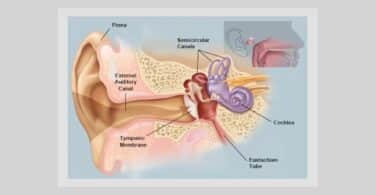Excerpted from : Textbook of Homeopathic Materia Medica -1920
As Homeopaths prescribe remedies for their patients upon the “totality of the symptoms” presented by their patients, it is apparent that a thorough knowledge of symptoms is necessary in order to prescribe homeopathically. Not only is it true that you must have a thorough knowledge of a symptom to prescribe homeopathically, but it is also true that in proportion to your knowledge of symptoms will be the accuracy, the success of your prescription.
Let us define a symptom as the manifestation of disease. It shows that the condition or function of some tissue or organ of the body is abnormal. You remember I told you when you were freshmen that a person was perfectly healthy when his tissues and organs were perfectly normal and functioning perfectly.
The essentials of a symptom are location, sensation and modalities. Of the three essentials of a symptom, modality is the most important. By location we do not mean the head or leg or hand, but some tissue or organ. As all organs are composed of more than one tissue we can only speak of them as locations when we think of them as a whole and functioning as such. Let me illustrate by taking the region under the left nipple. Beneath this we have such tissues as the skin, fascia, muscle, periosteum, bone, pleura and a portion of the heart which we consider as an organ composed of several tissues. All of these tissues are supplied by another tissue, i. e., nerve tissue.
The sensations indicate the tissues involved, e, g., a sharp, shooting, lightning-like pain indicates a nerve; a pulsating pain indicates an encapsulated organ; a sharp, splinter-like pain indicates an ulcerated mucous membrane or skin. By modality, we mean that which makes a condition or sensation worse or better. We speak of them as aggravations (agg.) or ameliorations (amel.). To illustrate, a pain is agg. or amel. by heat, cold, position, exercise, eating, time of day, etc. The brain is the most important location, because the homeopathic physician individualizes each case and the brain is the most important part of the human body.
Symptoms may be divided into many classes.
Objective and Subjective Symptoms.
An objective symptom is one which may be recognized by an observer who has the use of all his senses, e, g,, color, a murmur, an odor, a taste, heat, coldness, smoothness, roughness, etc. A subjective symptom is one which is perceived or imagined only by the patient himself, e.g., a pain, an illusion or delusion in regard to sight, hearing or sensation. Which of the two should rank the higher? That depends whether or not your patient is intelligent, reliable and rational. As I have stated above, we Homeopaths individualize and in this process the mental symptom should be given the highest rank. Therefore, if the patient be perfectly normal mentally, the subjective symptoms should be given the highest rank. A mental symptom is always a subjective symptom. But we find so many of our patients unreliable, irrational and wanting in the kind of intelligence necessary to accuracy, and we have so good an opinion of ourselves, that we prefer to believe our own senses rather than those of our patients.
Dynamic, Functional and Pathological Symptoms.
Our second class includes dynamic, functional and pathological symptoms. A dynamic symptom is difficult to define. Some consider it the purest kind of a subjective symptom. Others understand by a dynamic symptom the manifestation of some condition which we are unable to detect by any of our senses, due to the fact that we have not as yet instruments of precision sufficiently developed.
Pathognomonic and Characteristic Symptoms.
A pathognomonic symptom is the distinguishing symptom of a disease or condition, e.g., the peculiar rash and odor of measles, the primary and secondary fever of smallpox, etc. A characteristic symptom is the distinguishing symptom of a drug. It is to the drug what the pathognomonic symptom is to the disease, e. g. agg. of all the symptoms by means of sleep under Lachesis. You ask if there are diseases and conditions which are agg. by sleep, i.e., are there patients who really feel worse as the result of sleep? Any one of five years’ experience will tell you that any conditions resulting from improper elimination are worse after sleep, especially is this true of uremic headaches or headaches resulting from constipation.
Totality of Symptoms
Probably there is no expression in our homeopathic literature more confusing than “Totality of Symptoms.” In our textbooks, in our journals, we find almost as many definitions of the phrase as there are writers. Let us as students and teachers reach some clear understanding on the subject at the beginning of our year’s work. The first thing I want you to understand is that totality is not a numerical totality. Three symptoms out of fourteen may determine the totality. If this last statement be true, symptoms must have different degrees or ranks. There must be higher and lower degrees or rank of symptoms. And it is a fact that most writers on materia medica and repertories divide and arrange the symptoms into five groups or classes, according to the importance each writer gives a symptom.
How do we establish the rank of a symptom? There are many ways. When speaking of the essentials of a symptom, I told you that mental symptoms (those showing abnormal condition of the brain) should be given the highest rank and modalities the second rank. I have always put sensations in the third class. The pathological symptoms, I have been in the habit of putting in the fourth class. In the fifth class, I have put all the so-called “common” symptoms, such as lack of hunger, thirst, diarrhea and other functional symptoms which may be easily caused by errors of diet, exposure to cold or heat, etc. But the above only touches the surface of our subject, and one would be poorly equipped whose knowledge of symptoms was not clearer and deeper.
Going a little deeper into our subject we find that certain mental symptoms rank much higher than other mental symptoms, certain functional higher than other functional, and pathological higher than other pathological. How did Allen determine that a certain symptom should appear in large black type in his Handbook, denoting the highest rank; or how did Boenninghausen decide what remedies should be in capital letters in his repertory, or Knerr what ones should be marked with the heavy double lines in his repertory? The conclusion was reached from several viewpoints. If they found a peculiar, unusual or striking mental symptom they gave it the highest rank. Let me illustrate. A man came into our clinic who said he had something like a lizzard in his stomach. It had been there for thirteen years. This insect caused much distress in the man’s stomach, his joints and the left side of the head, when the insect was active, and the insect was active when a storm was “coming up”, but would quiet down as “soon as the storm broke.” Here was not only a mental symptom but a peculiar symptom and a marked modality. Such a symptom would receive next to the highest rank.
Another illustration: Nearly all the provers of a certain drug had pains in the joints and other symptoms agg. just before a storm, but the agg. ceased when the storm broke. A peculiar modality. Such a symptom would receive next to the highest rank.
A third illustration : Half of the provers of a certain drug had diarrheic stools, cutting, twisting, grinding pains in the abdomen (enteralgia and enteritis), the pain amel. by hard pressure on the abdomen, also by hot drinks. Five drops of this remedy in a cup of hot water cured without a failure in five hundred cases to which it was given. The symptoms appear in black type in Allen, “caps ” in Boenninghausen and doubled lined in Knerr. We call such a symptom a verified symptom.
Now for the application of that illustration.We take a case and find fourteen symptoms. Only three of these symptoms appear under Colocynth, but they are all of the highest rank, the first one because it is peculiar, the second because it is a modality, and the third because it has been verified a thousand times. All of the fourteen symptoms are found under Nux vomica, but all of them in the lowest rank. Expressing the highest rank by the numeral five and the lowest by one, we find that Colocynth represents fifteen and Nux fourteen. And we say Colocynth has the “totality of symptoms”.
Besides the peculiar symptoms, the verified and the symptoms reported by a large majority of provers, I have found another symptom to which I attach much importance. I call it a reasonable symptom. You will not find it under that name in your text-books, so I will describe and define it by illustration. Several years ago while we were proving a certain remedy here in our college, there were certain head symptoms, subjective symptoms, reported by the majority of the provers.
Then followed certain other symptoms, diarrheic stools, etc. But not until the provers presented yellow sclera and the laboratory tests demonstrated bile in the urine could I give the proper rank to the head and stool symptoms. The fact that certain causes will always produce the same results when operating under similar conditions should be recognized and remembered in our study of symptoms.





Dear Sir/Madam
Thank you for a really homoeopathic article
with refreshing sobriety and accuracy.
Thanx, Stefan